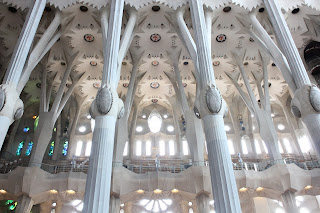So it’s the night before Royal Ascot, Michael is frothing at the mouth with excitement, and I’m stuck at work at 9pm without a dress, shoes or bag for the races. All was not lost however, as the English, in all their civilised wisdom, don’t believe that races should start before 2.30 in the afternoon, unlike the fanatically Australians and their 11am ‘first races’.
Awoke around 9am to Michael bringing me coffee and breakfast in bed, still salivating, and informing me that he’d already gone to the train station to pre-purchase our train tickets. In other words, get up, La, its RACE DAY!
Decided to go for the nightclub look and wear slightly gaudy backless black lace dress instead of my only other option (black work dress), with non-matching hat, purchased in a mad rush online a few days earlier. Paired it with low sensible work shoes (bucking the trend of sky highs as I would later observe) and camera bag (as work bag just did not go) and umbrella (obvs). I looked exactly like a tourist who had had a late night out at the clubs and had gotten lost on the way to the London Eye and ended up at the races. The height of style, I was not. I did make sure to wear tights though, with a nod to my upper class friends (not wearing tights here is broadly akin to not wearing any undies it seems – very lower class).
We caught the train from Waterloo in similar style to Flemington – i.e. lots of pretty ladies squished into tight shoes trying to get the last seat on the train. Unlike Flemington however there were lots of men in top hats and tails and everyone was drinking champagne from paper coffee cups (public drinking here = totally legal).
Royal Ascot racecourse itself is quite spectacular. Built by Queen Anne in 1711 it is now owned by Her Maj, and is just a few miles from Windsor Castle.
Out the front is the show ring where they parade the horses before their race, and the Royals at the beginning of the day (to a rousing chorus of God Save the Queen). We tried to get a glimpse of her, and we were generously given a spot near the front by a fellow who informed me he was Irish and so couldn’t stand the Queen, and needed a drink urgently.
To put it into perspective, the grandstand is roughly 4 times the size of Flemington.
Lizzie in Green
The fashions are mad. Royal Ascot has “fashion assistants” at all the entry points inspecting all the ladies to make sure there are no fascinators at all (and hats are greater than 10cm in diameter), that all dresses have straps of at least 2 inches (Her Maj doesn’t like to see people’s bras) and that dresses were reasonably close to one’s knee. They are armed with pre-made hats and pashminas for offenders.
This year being the Queen’s Diamond Jubilee, the main race was called... Diamond Jubilee Stakes, featuring our very own Black Caviar. The queen personally hands over the cup to the winner at the end of the race.
We, of course, were right near a large contingent of drunken Australian Black Caviar supporters, who annoyingly kept yelling “He’s the best horse ever to run, ever”. I tried at one point to explain to someone that he was in fact a she, but the idea just didn’t take.
One enterprising fellow had fashioned a flagpole out of someone’s walking stick and had tied an Aussie flag to the end. When he brought it out the English near him sunk back, forming quite a large empty circle around him, possibly for fear of what else the crazy Australian would do next. That was entertaining until he blocked everyone’s view during the race with said flag, not realising that the horses run clockwise in the UK (and was thus looking in the WRONG direction for the horsies to arrive).
10,000 of the 80,000 crowd were Australians. Roughly 9,999 of them had spent the first half of the day explaining to the British who she was and how great she was, and then had a heart attack when she very nearly didn’t win.
I won’t go into coverage of what Black Caviar did, how terrible the ride was etc, as I cannot possibly risk the chance of having another discussion with Booba about it when he reads this. She won, possibly spurred on by Booba screaming obscenities at the jockey, and our Australian pride remains intact, along with English opinion that we are in fact, all mad.
The best part of the day was watching Michael and his friends bet. All seasoned betters, they found it incredibly frustrating trying to put bets down as the lingo is quite different. Michael spent a few minutes trying to explain to a bookie what a box trifecta was, and like me, he couldn’t comprehend. One Aussie tried for something complicated and the bookie gave him something else entirely, explaining when he went to collect that he had no idea what he was asking for so had just guessed (incorrectly).
All in all an absolutely fantastic day had by all. Definitely going again next year.















































